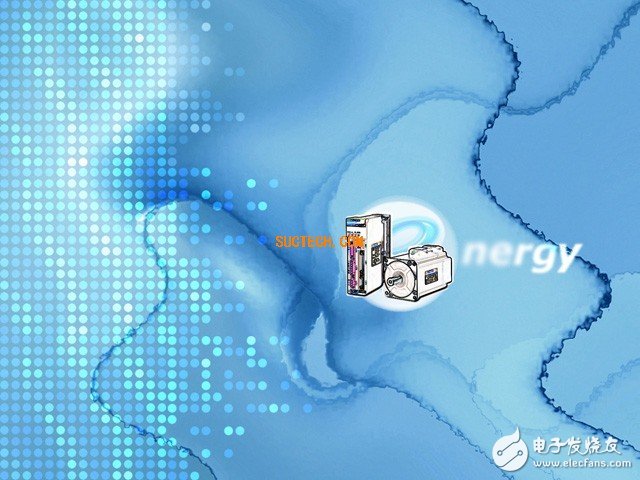Motion control originated from the early servo control. Simply put, motion control is the real-time control and management of the position and speed of mechanical moving parts, so that they can move according to the expected motion trajectory and prescribed motion parameters. The early motion control technology was mainly developed with the development of CNC technology, robot technology and factory automation technology. Early motion controllers are actually dedicated controllers that can run independently, often without the support of additional processors and operating systems, and can independently complete motion control functions, other functions required by process technology, and human-computer interaction functions. This type of controller can become an independent motion controller. This type of controller is mainly designed for specialized CNC machinery and other automation equipment. The relevant functions are often designed according to the process requirements of the application industry. Users only need to write application processing code files according to their protocol requirements, and use RS232 or DNC to transmit. To the controller, the controller can complete the relevant actions. This type of controller often cannot leave its specific process requirements for cross-industry applications. The openness of the controller only depends on the controller's processing code protocol, and users cannot reorganize their own motion control systems according to application requirements.
Definition of motion control
Motion control (MC) is a branch of automation that uses devices commonly known as servo mechanisms such as hydraulic pumps, linear actuators or motors to control the position and / or speed of the machine. The application of motion control in the field of robots and CNC machine tools is more complicated than that in special machines, because the latter form of motion is simpler and is often referred to as general motion control (GMC). Motion control is widely used in packaging, printing, textile and assembly industries.

The basic structure of the motion control system
A motion controller is used to generate the trajectory point (expected output) and close the position feedback loop. Many controllers can also close a speed loop internally.
A drive or amplifier is used to convert the control signal (usually speed or torque signal) from the motion controller into a higher power current or voltage signal. The more advanced intelligent drive can close the position loop and speed loop by itself to obtain more precise control.
An actuator such as a hydraulic pump, cylinder, linear actuator or motor is used to output motion.
A feedback sensor such as a photoelectric encoder, resolver or Hall effect device is used to feed back the position of the actuator to the position controller to achieve the closure of the position control loop.
Numerous mechanical components are used to convert the movement form of the actuator into the desired movement form. It includes gearboxes, shafts, ball screws, toothed belts, couplings, and linear and rotary bearings.
In terms of motion control, the control trajectories required for several sports
(1) Point-to-point movement (point-to-point): the use of single axis, through the instruction set of the motion control card, control single axis movement from point A to point B, so it is also called point-to-point movement.
(2) Tweening motion (InterpolaTIon): Tweening motion can usually be divided into linear tweening and circular tweening motion. Linearity can usually be composed of more than two axes, while circular tweening motion is composed of two axes, forming a multi-dimensional or two-dimensional motion trajectory. Usually tween motion can be used for continuous track motion control, such as carving or shoe mold. The analysis of tween motion determines the control accuracy of the trajectory motion.
(3) Spiral motion: It is composed of two-dimensional circular arc motion and vertical axis linear motion, which is mostly used in the application of machine tools.
(4) Multi-axis simultaneous movement or simultaneous stop: control two or more motion axes to perform PTP simultaneous movement or stop simultaneously.
(5) Synchronous motion control: Through the absolute synchronization of the motion control card, the motion of multiple axes can be accurately controlled according to a certain time sequence, and the conditions can be set so that the axes can move according to the mutual relationship. Usually this kind of control must be achieved by using a serial motion controller. Since the serial controller and the motor driver have a specific communication protocol, they can achieve absolute motion control based on the operating clock. This article is to share with the reader the technology of program motion control developed by synchronized motion.
Light for the part of a car that contains some of the controls used for driving and the devices for measuring speed , distance. The information on the dashboard is varied according to the original design of the vehicle. Dashboard lamp is a functional luminaries used to indicate the performance of a vehicle. dashboard lights, general instrument of the vehicle lamp has ABS lamp, led light for EPC, O/D block indicator, seatbelt light, battery indicator light, the oil lamp, led light for light oil, water temperature, engine indicator, hand brake lights, in the before and after the lights, turn signals, the fog lamp light, and vehicle failure indicator, etc.
Auto Dashboard Lamps
Auto Dashboard Lamps,LED Auto Dashboard Lamp,Auto Canbus LED Lamp,LED Indicate Auto Lamp
Heshan Jianhao Lighting Industrial Co., Ltd. , https://www.sunclubtw.com